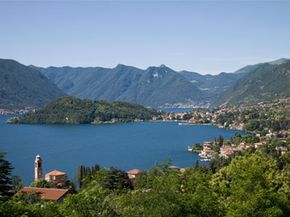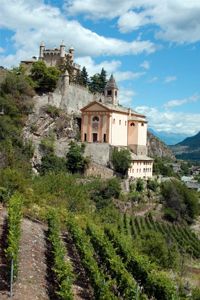Lombardy is the most populous region in Italy and one of the few without access to the sea. Landlocked as it is, however, the area is home to many beautiful lakes such as Lake Como and Lake Garda, nestled among the mountains. The Alps are in the north, extending over the border into Switzerland. To the south, the hills descend into the valley of the Po River and its tributaries -- a rich, flat agricultural zone that includes Lombardy's wine region.
The region's capital, Milan, is one of the great cities of Europe and serves as Italy's center of fashion and finance. Surrounding it are cities and villages containing cultural riches and relics. Mantua, for example, is celebrated for its Renaissance art and architecture. And amongst the medieval churches and monasteries of Pavia is the burial site of St. Augustine [source: Brannon].
Advertisement
Lombardy is one of Europe's most productive agricultural regions, but it's normally associated with food production rather than vineyards. The neighboring regions of Piedmont, Emilia-Romagna and Veneto each bottle considerably more. Nevertheless, some superb Italian wines are made here.
The Lombardy wine region boasts a healthy assortment of each of these designations. Scenic wine roads and a plethora of Italy's best restaurants await the Lombardy traveler. But if you can't make it to Italy, you can still learn how to find the wine in your local stores. In this article, you'll discover the history and culture of Lombardy, the agriculture and its famous wines. Read on to learn the origins of Lombardy's wine region.
Advertisement


